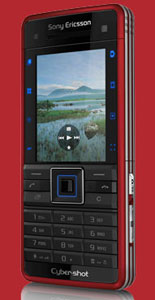Nokia E66
Technical specificationsSize
- Form: Slide
- Dimensions: 107.5 x 49.5 x 13.6 mm
- Weight: 121 g
- Volume: 62.6 cc
- Smooth sliding action
Display and 3D
- Size: 2.4"
- Resolution: 240 x 320 pixels (QVGA)
- 16.7 million colours
Keys and input method
- Numeric keypad
- Dedicated one-touch keys: Home, calendar, contacts, and email
- Speaker dependent and speaker independent voice dialling
- Accelerated scrolling with intelligent NaviTMKey
- Illuminated One-touch keys
Colors and covers
- Available in-box colors: Grey steel and White steel
- Operating frequency
- Quad-band GSM 850/900/1800/1900
- Automatic switching between GSM bands
- Flight mode
Data network
- GPRS class B, multislot class 32
- EDGE class B, multislot class 32
- WCDMA 900/2100 or 850/1900 or 850/2100
- HSDPA, maximum speed 3.6 Mbps (DL)
- WLAN 802.11b, 802.11g
- TCP/IP support
- Capability to serve as data modem
- Support for MS Outlook synchronization of contacts, calendar and notes
Local connectivity and synchronization
- Infrared, maximum speed 115 kbps
- Bluetooth version 2.0 with Enhanced Data Rate
- Bluetooth profiles: DUN, OPP, FTP, HFP, GOEP, HSP, BIP, RSAP, GAVDP, AVRCP, A2DP - Add-on solutions enable integration into enterprise private branch exchange (PBX) infrastructure
- MTP (Multimedia Transfer Protocol) support
- Print support
- Support for local and remote SyncML synchronization, iSync, Intellisync, ActiveSync
- Support for PC synchronization with Nokia PC Suite
Call features
- Integrated hands-free speakerphone
- Automatic answer with headset or car kit
- Any key answer
- Call waiting, call hold, call divert
- Call timer
- Logging of dialed, received and missed calls
- Automatic redial and fallback
- Speed dialing
- Speaker dependent and speaker independent voice dialing (SDND, SIND)
- Fixed dialing number support
- Vibrating alert (internal)
- Side volume keys
- Mute/unmute
- Contacts with images
- Conference calling with up to 6 participants
- Video calling
- Push to talk
- VoIP
- Easy dialling directly from home screen
Messaging
- SMS
- Multiple SMS deletion
- Text-to-speech message reader
- MMS
- Automatic resizing of images for MMS
- OMA Instant Messaging and Presences Service
- Instant Messaging client (OMA IMPS 1.2)
- Windows Live Messenger application* * service not available in all countries - Cell broadcast
- Supported protocols: IMAP4, Mail for Exchange, POP3, SMTP
- Support for e-mail attachments
- IMAP IDLE support
- Support for Nokia Intellisync Wireless Email
- Support for Nokia Mobile VPN
Web browsing
- Supported markup languages: HTML, XHTML, MP, WML
- Supported protocols: HTTP, WAP
- TCP/IP support
- JavaScript version 1.3 and 1.5
- Nokia Mini Map Browser
- Nokia Mobile Search
- Photography
- 3.2 megapixel camera
- Image formats: JPEG/EXIF
- CMOS sensor
- 4x digital zoom
- Autofocus
- LED flash
- Flash modes: On, off, automatic, red-eye reduction
- Flash operating range: 1 m
- White balance modes: automatic, sunny, incandescent, fluorescent
- Centre weighted auto exposure; exposure compensation: +2 ~ -2EV at 0.7 step
- Capture modes: still, sequence, self-timer, video
- Scene modes: automatic, user defined, portrait, landscape, night, night portrait
- Colour tone modes: normal, sepia, black & white, negative
- Full-screen viewfinder with grid
- Active toolbar
- Dedicated camera key
- Landscape (horizontal) orientation
- Share photos with Share on Ovi
Video- Main camera
- Video recording at up to 640 x 480 pixels (VGA) and up to 22 fps - Up to 4x digital video zoom
- Front camera
- Video recording at up to 128 x 96 pixels (QCIF) and up to 15 fps - Video recording file formats: .mp4, .3gp; codecs: H.263, H.264
- Audio recording formats: AMR, AAC stereo
- Video white balance modes: automatic, sunny, cloudy, incandescent, fluorescent
- Color tone modes: normal, sepia, black & white, vivid, negative
- Clip length (maximum): 60 min
- RealPlayer
- Video playback file formats: .mp4, .3gp; codecs: H.263, H.264
- Video streaming: .3gp, .rm
- Landscape mode video playback
- Video calling: up to 640 x 480 pixels (VGA), up to 22 fps
- Video ring tones
Music and audio playback- Music player
- Real player
- Music playback file formats: AAC, AAC+, MP3, AMR-NB, AMR-WB
- Audio streaming formats: .rm, .eAAC+
- FM radio 87.5-108 MHz
- Visual Radio support. Read more: www.visualradio.com
- 2.5 mm Nokia AV connector
- Nokia Music Manager
- Nokia Music Store support
- Nokia Podcasting support
- Ring tones: mp3, aac, 64-tone polyphonic (25 built-in tones)
Voice and audio recording- Voice commands
- Voice dialing
- Voice recorder
- Audio recording formats: AMR, AAC stereo
- FR, EFR, WCDMA, and GSM AMR
- Digital microphone
- Text-to-speech
Personalization: profiles, themes, ring tones- Customizable profiles
- Customizable ring tones
- Customisable video ring tones
- Support for talking ring tones
- Customizable themes
- Two customizable home screen modes

 Last Friday, OpenMoko launched its highly anticipated FreeRunner smartphone, a Linux-based handset that's completely open in both hardware and software, and is designed to encourage third-party modification and customization. Although the FreeRunner's software platform is still incomplete, the device has attracted considerable attention from mobile software developers and Linux enthusiasts.
Last Friday, OpenMoko launched its highly anticipated FreeRunner smartphone, a Linux-based handset that's completely open in both hardware and software, and is designed to encourage third-party modification and customization. Although the FreeRunner's software platform is still incomplete, the device has attracted considerable attention from mobile software developers and Linux enthusiasts. 







